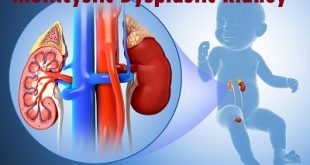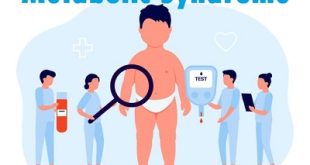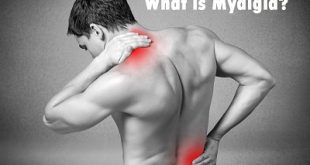Definition
Medial epicondylitis is commonly known as golfer’s elbow. This does not mean that only golfers have this condition. But the golf swing is a common cause of medial epicondylitis. Many other repetitive activities can also lead to golfer’s elbow: throwing, chopping wood with an ax, running a chain saw, and using many types of hand tools. Any activities that stress the same forearm muscles can cause symptoms of golfer’s elbow.
Causes
The part of the muscle that attaches to a bone is called a tendon. Some of the muscles in your forearm attach to the bone on the inside of your elbow. When you use these muscles over and over again, small tears develop in the tendons. Over time, this leads to irritation and pain where the tendon is attached to the bone.
The injury can occur from using poor form or overdoing certain sports, such as:
- Golf
- Baseball and other throwing sports, such as football and javelin
- Racquet sports, such as tennis
- Weight training
Repeated twisting of the wrist (such as when using a screwdriver) can lead to golfer’s elbow. People in certain jobs may be more likely to develop it, such as:
- Painters
- Plumbers
- Construction workers
- Cooks
- Assembly-line workers
- Computer users
- Butchers
Risk Factors of Medial Epicondylitis
Factors that may increase your chance of medial epicondylitis include:
- Playing golf or tennis
- Work that requires repetitive gripping or clenching of the fingers (especially when the hand is bent up or down at the wrist)
- Muscle imbalance
- Decreased flexibility
- Increased age
Signs and Symptoms
Symptoms of medial epicondylitis may develop slowly, particularly when the condition has been brought on by overuse. Other people may develop symptoms suddenly, especially in the event of injury.
Symptoms associated with medial epicondylitis may be mild or severe. Some include:
- Pain when flexing the wrist toward the forearm
- Pain that extends from the inside of the elbow through the wrist to the pinky
- A weak grip
- Pain when shaking hands
- Difficulty moving the elbow
- A tingling sensation extending from the elbow to the ring and pinky fingers
- A stiff elbow
- A weakened wrist
Complications of Medial Epicondylitis
In addition, medial epicondylitis may also be associated with other problems, such as ulnar nerve neuropathy. A compression of this nerve, also known as the cubital tunnel syndrome, which is located just after the medial epicondyle. It usually tingles the fingers, especially between the fourth and fifth fingers. In more severe cases it can cause loss of strength in the region.
The disease can also be associated with medial instability of the elbow. It tends to occur mainly in those who practice sports activities frequently, such as throwing, which requires repetitive valgus movement and can cause injuries to the medial ligaments of the athlete’s elbow.
Sometimes, medial epicondylitis can result in a complication. It is the involvement of the ulnar nerve because the proximity to it is great. This nerve is precisely the one that causes us a sensation of shock when we hit the elbow on an object or piece of furniture.
The patient who had medial epicondylitis if he presents frequent tingling in the hand, especially in the ring and little fingers, possibly has a problem with the ulnar nerve. In this case, new physical exams must be done to assess the need for surgery where a tendon debridement (cleaning) and nerve decompression are performed.
Diagnosis of Medial Epicondylitis
You will be asked about your symptoms, medical history, recent physical activity, and how the injury occurred. You may not remember the event that caused the injury because golfer’s elbow pain develops over time. The doctor will examine your elbow for:
Pain on the inner side of the elbow when:
- Doing certain arm motions
- Pressing on the medial epicondyle
Stiffness of elbow and pain with wrist movement
X-rays are not usually necessary. However, an x-ray may be needed if the doctor suspects other problems.
An MRI scan is occasionally used for diagnosis, but there is only limited evidence supporting this use.
Treatment of Medial Epicondylitis
Treatment begins with avoiding activity that causes pain. To help relieve pain, use ice.
Medication
You can take an over-the-counter pain reliever. Try ibuprofen (Advil, Motrin IB, others), naproxen sodium (Aleve) or acetaminophen (Tylenol, others).
Corticosteroid injections are not commonly given because they haven’t been shown to be effective long-term. A newer treatment being tried is platelet-rich plasma. This involves drawing a small amount of your blood and injecting a concentrated amount of platelets and other anti-inflammatory factors into the tender area. More studies are needed to evaluate the effectiveness of this treatment.
Therapy
Try the following:
Rest. Put your golf game or other repetitive activities on hold until the pain is gone. If you return to activity too soon, you can worsen your condition.
Ice the affected area. Apply ice packs to your elbow for 15 to 20 minutes at a time, three to four times a day for several days. To protect your skin, wrap the ice packs in a thin towel. It might help to massage your inner elbow with ice for five minutes at a time, two to three times a day.
Use a brace. Your doctor might recommend that you wear a counterforce brace on your affected arm, which might reduce tendon and muscle strain.
Stretch and strengthen the affected area. Your doctor might suggest exercises for stretching and strengthening. Progressive loading of the tendon with specific strength training exercises has been shown to be especially effective. Other physical or occupational therapy practices can be helpful too.
Gradually return to your usual activities. When your pain is gone, practice the arm motions of your sport or activity. Review your golf or tennis swing with an instructor to ensure that your technique is correct, and make adjustments if needed.
Exercises
Exercising and stretching muscles in the arm can help to prevent or heal medial epicondylitis. Ask a doctor or physical therapist about exercises, such as those listed below. They will likely have more personalized suggestions.
Ball squeezes: Squeezes are a simple exercise involving a soft rubber ball or stress reliever. Place the ball in the palm of the affected hand and make a fist around it. Squeezing and releasing in repetition will strengthen the forearm.
Finger extensions: Squeeze all five fingertips together and stretch a rubber band around them. Extend the fingers away from each other as far as the rubber band will allow.
Wrist extensions: Before performing this exercise, get a 1-pound weight. Place the injured forearm on a knee or table, with the hand suspended over the edge. Hold the weight in this hand, and slowly raise and lower it.
Forearm pronation and supination: This exercise involves holding a heavy object, such as a hammer. Lay the damaged forearm on a table or knee for stability. To start, hold the object so that the palm is parallel to the body. Rotate the hand so that the palm faces downward. Return to the starting position, then rotate the hand so that the palm faces the ceiling.
Surgery
Surgery is seldom necessary. But if your signs and symptoms don’t respond to conservative treatment in six to 12 months, surgery might be an option. A new approach called the TENEX procedure involves minimally invasive, ultrasound-guided removal of scar tissue in the region of the tendon pain. More study is needed.
Most people will get better with rest, ice and pain relievers. Depending on the severity of your condition, the pain might linger for months to years – even if you take it easy and follow instructions on exercising your arm. Sometimes the pain returns or becomes chronic.
Prevention of Medial Epicondylitis
You can take steps to prevent golfer’s elbow:
- Strengthen your forearm muscles. Use light weights or squeeze a tennis ball. Even simple exercises can help your muscles absorb the energy of sudden physical stress.
- Stretch before your activity. Walk or jog for a few minutes to warm up your muscles. Then do gentle stretches before you begin your game.
- Fix your form. Whatever your sport, ask an instructor to check your form to avoid overload on muscles.
- Use the right equipment. If you’re using older golfing irons, consider upgrading to lighter graphite clubs. If you play tennis, make sure your racket fits you. A racket with a small grip or a heavy head may increase the risk of elbow problems.
- Lift properly. When lifting anything — including free weights — keep your wrist rigid and stable to reduce the force to your elbow.
- Know when to rest. Try not to overuse your elbow. At the first sign of elbow pain, take a break.
 Diseases Treatments Dictionary This is complete solution to read all diseases treatments Which covers Prevention, Causes, Symptoms, Medical Terms, Drugs, Prescription, Natural Remedies with cures and Treatments. Most of the common diseases were listed in names, split with categories.
Diseases Treatments Dictionary This is complete solution to read all diseases treatments Which covers Prevention, Causes, Symptoms, Medical Terms, Drugs, Prescription, Natural Remedies with cures and Treatments. Most of the common diseases were listed in names, split with categories.







